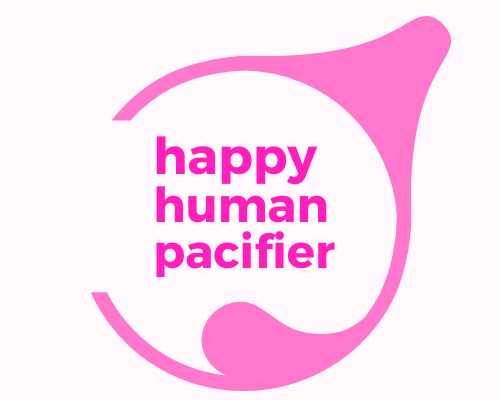Contents
Guest Post by Johanna Cider
Throughout much of the world, co-sleeping of children and their caregivers is considered to be completely normal.
Co-sleeping is widely favoured because it facilitates breastfeeding
on demand, fosters secure attachment and promotes the physical wellbeing of the child, as well as being generally easier for the parents. As such, many parents would consider it unthinkable, even neglectful, to contravene what seems like basic human instincts by forcing a baby to sleep alone.
Co-sleeping in the West
However, in North America and some other Western cultures, co-sleeping, particularly bedsharing, is stigmatised, controversial and often discouraged by official health agencies. Many parents feel social pressure to comply with the standard separate bedroom, sleep training regime, even when it doesn’t feel all that natural.
Parents’ decisions around sleeping arrangements are a product of subtle cultural expectations about how children should be raised, as well as more explicit advice from official bodies, citing the risk of sleep-related sudden infant deaths. This advice, while rooted in understandable safety concerns, fails to take into account that co-sleeping, when done safely, can offer lasting benefits for all concerned.
While the risk of SIDS is often cited in the West as evidence against the safety of co-sleeping, some countries where co-sleeping is the norm report significantly lower rates of sudden infant deaths.
 Co-sleeping in Japan
Co-sleeping in Japan
In Japan, the traditional bedsharing configuration is known as “kawa no ji”, from the kanji for “river”. With the child in the middle as the “water”, the parents make up the “riverbanks”, with all sleeping on firm bamboo, straw mats or futons. This setup enables the mother to constantly monitor the infant.
This co-sleeping setup may have been a factor in the consistently lower SIDS rate per 1,000 live births observed in Japan, in comparison to the USA from 1990 to 2008.
Lower maternal smoking rates and differences in sleep surfaces are also thought to be instrumental in mitigating this risk.
Co-sleeping in India
In India, co-sleeping is also the norm. Mothers cite the maintenance of a strong milk supply and the building of familial bonds as reasons for engaging in the traditional practice of bedsharing.
Infants are often wrapped in their mother’s sari for an extra layer of protection and maternal pheromones, and it is not uncommon for the entire family to share a bed until children are 8 or 9.
Co-sleeping promotes a good night’s rest
Although critics of co-sleeping often cite poor sleep quality in their arguments against the practice, many parents attest that their sleep quality is better when they can attend to their child’s needs without having to get out of bed.
Additionally, co-sleeping infants have also been shown to experience shorter awakenings
than babies who sleep separately from their parents.
Co-sleeping Safety Tips
In any parenting endeavour, regardless of culture, safety should always be of paramount concern.
While the evidence is mounting to support the benefit of co-sleeping to both parents and developing child, the importance of maintaining a safe and comfortable co-sleeping environment can never be underestimated.
- If you are bedsharing, it is vital to ensure that your baby has space to lie supine, with good ventilation and protected from the risk of injury.
- Bottlefed babies should always sleep on a separate surface, like a bedside crib.
- Select hypoallergenic fabrics, avoiding extra blankets or pillows that could pose a suffocation risk.
- Adjust the light values in the room using lamps, blackout blinds or curtains, and consider a white noise machine or app to provide a soporific hum.
- Never co-sleep on a sofa or recliner
- Lastly, avoid co-sleeping when smoking or under the influence of alcohol or medication.
Image Credit: Co-sleeping. Photo by David D via Flickr under License
 About the Author:
About the Author:
Based in Wellington, New Zealand, Johanna is a creative writer who has an interest in Japanese anime, kawaii stationery and sushi. Throughout her freelance writing career, she has contributed to several blogs and sites, including Harrows. To see more of her work, follow her on Tumblr.
Editor’s Note:
As a co-sleeping/bedsharing Mom, it definitely appeared that we enjoyed more sleep than my friends who had their newborns in their own bedrooms or nurseries.
Our son is now 5-and-a-half and our building renovations are done, so he moved into his own room a couple of months ago. It came at the perfect time for him, he was just at that stage of independence where he wanted to sleep by himself.
For the most part that means our bedsharing days are over, except for the nights that he’s sick or upset about something and needs a better comfort. Or when Granny comes over.
For how many months or years did you share a bed or co-sleep with your little one? And was it frowned upon in your culture or absolutely normal?



Soo why should a bottle fed baby always sleep on a separate surface? What’s the difference in how they’re fed?
Brilliant question, Becky. I don’t think bottle-fed babies should sleep on a separate surface. Personally, I would encourage bedsharing/co-sleeping whether bottle-fed or breast-fed. Skin-to-skin or Kangaroo care is always recommended and I would imagine, especially so if you’re unable to breastfeed for any reason.
Pingback: iptv deals brampton
You’re most welcome. What did you like the most?